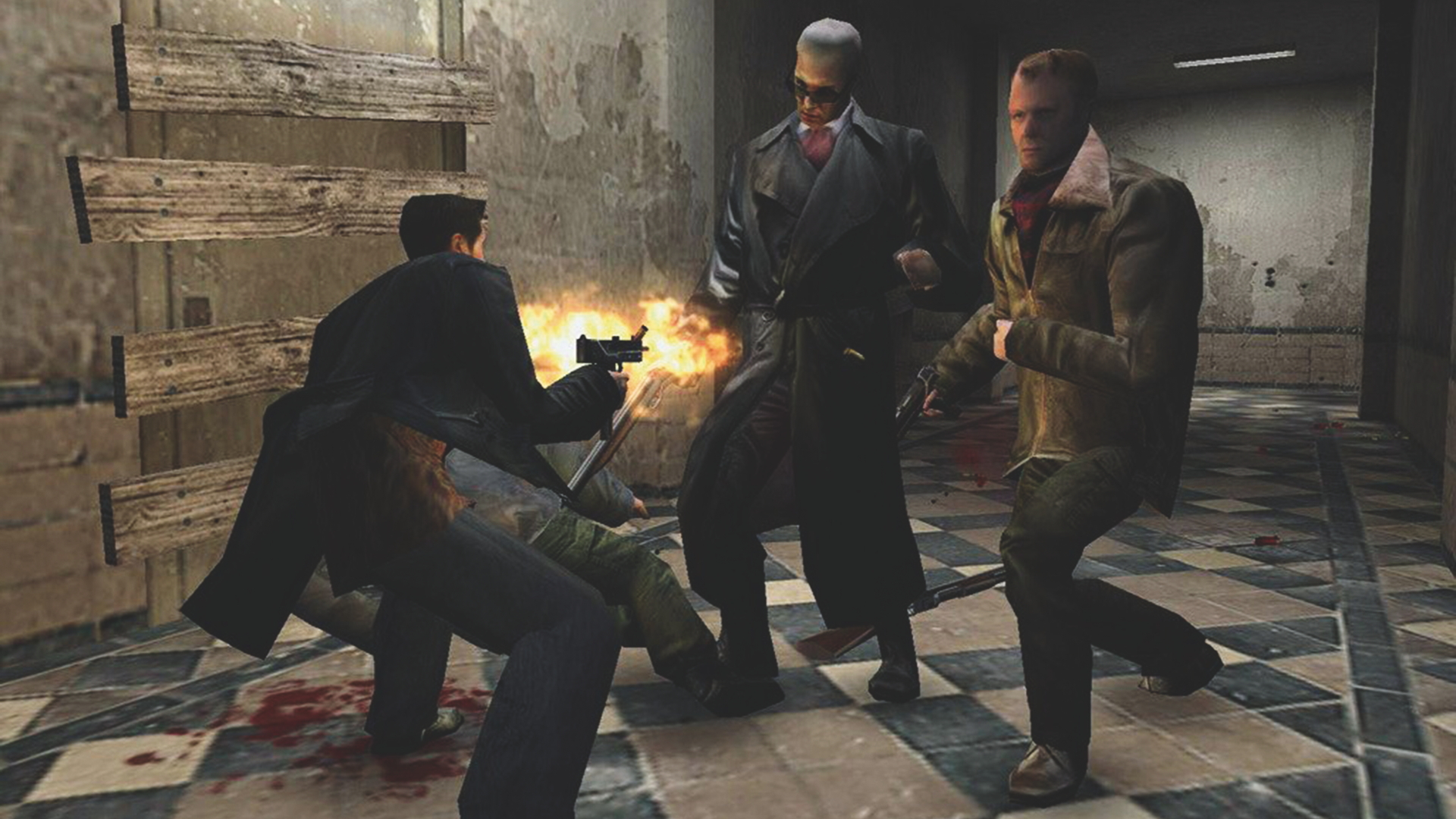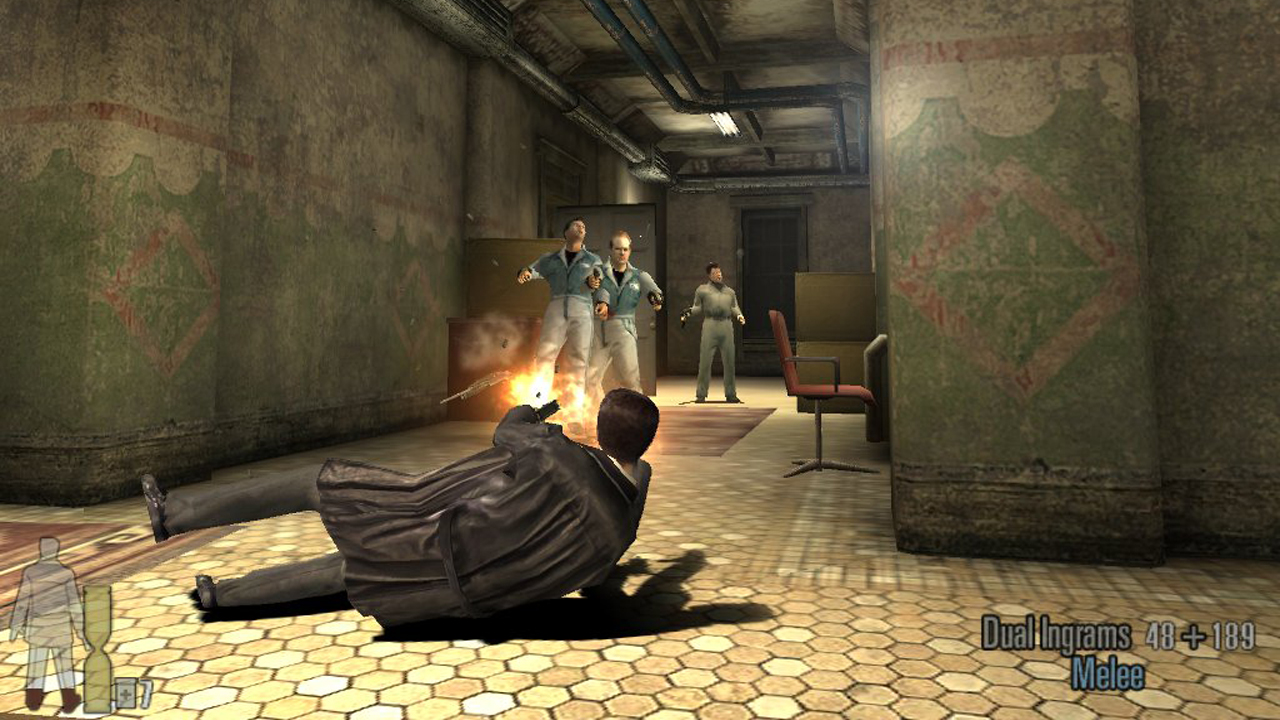One of Max Payne’s greatest moments is its own weird version of Twin Peaks. Did you watch Address Unknown?

In 2002 Max Payne provided an answer to that most burning of video game questions: what do the goons do with their free time when you’re not around? Turns out, they’re not so different than you or I: they sit around in their flats and watch TV. Worse still for your killer conscience, they have pretty good taste in original programming.
- This is what Xbox One X Enhanced means - it's not just 4K/HDR
- What do you need to be Xbox One X ready?
That moment of revelation comes during one of the absolute highlights in 2001’s Max Payne. He bursts into a modest New York living space, shooting everyone inside while diving awkwardly into the furniture, as is his wont. With the occupants silenced, the only sound in the apartment comes from an old cathode ray tube TV propped up on a dirty mattress. The show it’s playing is called Address Unknown, and to gaze upon it is to go mad.
A man walks between red curtains. There’s a flamingo on the screen, announcing that “mirrors are much more fun than television” in that reversed dialogue effect that’s instantly reminiscent of Twin Peaks. The curtains are an even more obvious nod, as is the idea of a doppelganger: “It’s not me talking to the Pink Flamingo,” says the voiceover, “but someone who looks the part down to the finest detail, except that he’s evil.” Laura Palmer’s double in the Red Room would be nodding approvingly. In reverse.
Admittedly, Address Unknown’s production values can’t hold a candle to David Lynch. It’s presented in still images, accompanied by an American-ish voiceover provided by Remedy’s Finnish studio manager, Matias Myllyrinne. It lasts no more than a minute. It can only be watched on a tiny screen from a third-person perspective, which means it’s depicted by roughly four pixels onscreen. But forget all that: when you first stumble into that room and stand, stock-still, listening to a flamingo talk about “the flesh of fallen angels”, everything changes. Suddenly you have no idea what might be in the next room, or the one after that.
As the player, you’re – deep breath – watching a man framed for the murder of his family watching a TV show about a man who looks like him, framed for the murder of his family by his double.
Anyone looking for a resolution to that debut episode would have to wait until 2003 when Max Payne 2: The Fall Of Max Payne arrived, six new episodes nestled within it. This is where the snake started to eat its own tail: the narrator of the show was depicted onscreen by Remedy’s Sam Lake, who wrote both games and, famously, provided his own likeness for Max. So as the player, you’re – deep breath – watching a man who’s been framed for the murder of his family watching a TV show about a man who looks exactly like him who’s been framed for the murder of his family by his exact double. All of a sudden, you long for the familiarity and certainty of that flamingo. Side note: said double is named John Mirra, which neatly encapsulates Address Unknown’s camp but nonetheless unsettling tone.
For the most part Max catches episodes by chance as they play in hospital waiting rooms and mobsters’ abodes, but the lines start to blur when he visits Mona Sax’s hideout in Coney Island. It seems Mona has inexplicably settled down in an abandoned funhouse based on the show, and in order to find her Max must navigate an obstacle course filled with cardboard cutouts, all while lines from the series bleat out over the PA system. Anyone who played that level surely remembers it vividly in 2017, in the same way you remember a particularly unpleasant cheese dream.

I love Address Unknown not because its narrative through line is especially clever or involving – it’s intended primarily as parody – but because it’s emblematic of a time when developers just... did this stuff. Someone had an offbeat idea one evening in the studio, and the next thing you know there’s a seven-part TV show spanning two games in there, messing with every player’s head and adding both humour and genuine unease in a throwaway few seconds. In its own way, it speaks of Remedy’s particular strand of genius.
Sign up to the GamesRadar+ Newsletter
Weekly digests, tales from the communities you love, and more
These serialised shows within games, and in fact shows within games within shows, in Quantum Break’s case, have become a Remedy calling card. Its Twilight Zone parody, Night Springs, appears in both Alan Wake and Quantum Break, and I’ll be heartbroken if neither of these shows is at least referenced in the next Remedy game because it seems to be one of the only studios capable of self- referencing without tipping over into self-indulgence. Many components of the original Max Payne have rusted up and lost their impressive qualities since 2002, but Address Unknown has aged like an oak-smoked Kyle MacLachlan. With Twin Peaks back on the air and new audiences enjoying its surreal charm, maybe it’s time to put Max back on the small screen too.
This article originally appeared in Xbox: The Official Magazine. For more great Xbox coverage, you can subscribe here.
Phil Iwaniuk is a multi-faceted journalist, video producer, presenter, and reviewer. Specialising in PC hardware and gaming, he's written for publications including PCGamesN, PC Gamer, GamesRadar, The Guardian, Tom's Hardware, TechRadar, Eurogamer, Trusted Reviews, VG247, Yallo, IGN, and Rolling Stone, among others.




